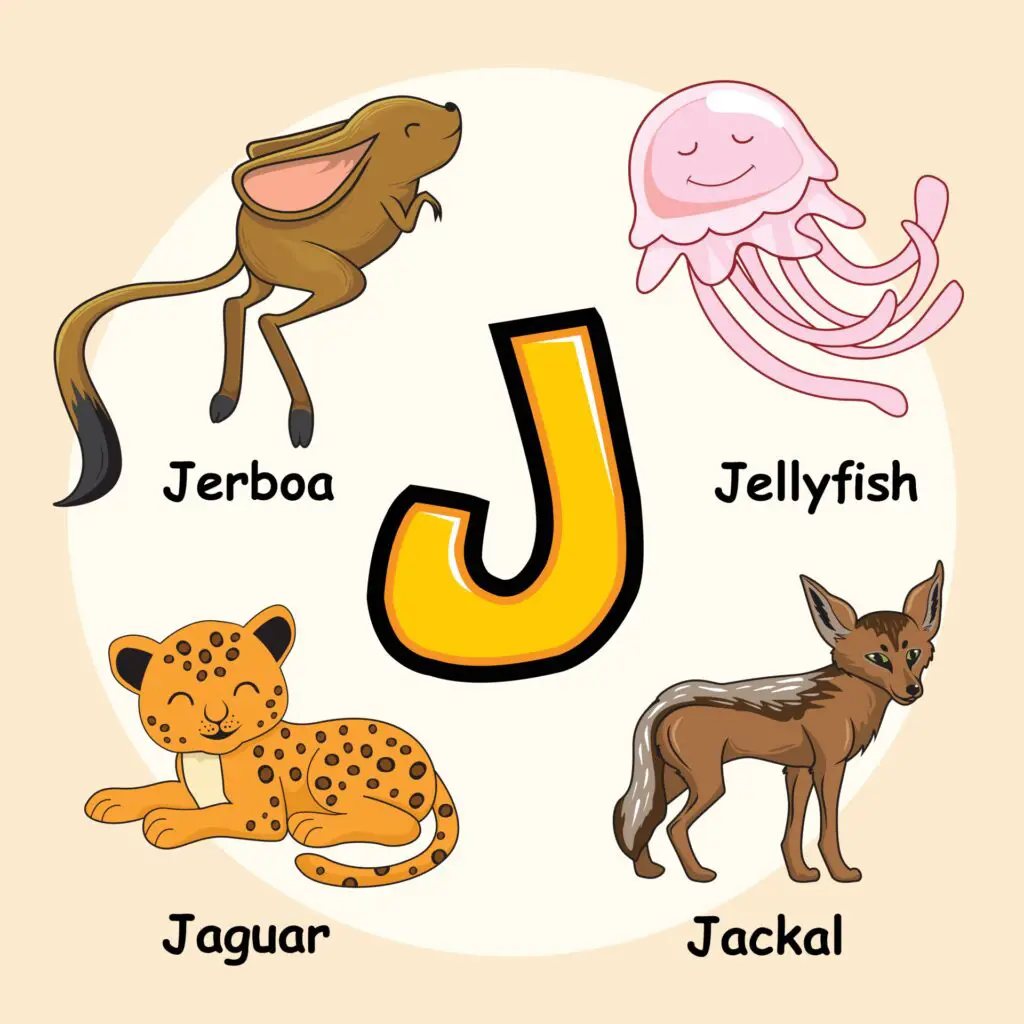Some common examples of six latter animal names are Aardvark, Cougar, Jaguar, Coyote, Ferret, Turtle, Bobcat, Beaver, Pelican, Quokka, Gazelle, etc.
The diversity of six-letter animal names
Six-letter animal names are quite diverse and span across various categories of the animal kingdom. In the mammal category, some examples of six-letter animal names include baboon, jaguar, lemur, raccoon, and weasel. Among birds, there are eagles, falcons, magpies, parrots, and robins.
Fish species with six-letter names include goblin, minnow, salmon, and swordfish. Reptiles such as geckos, iguanas, pythons, and turtles also have six-letter names. The diverse range of animals with six-letter names makes them easy to remember and pronounce, making them a popular choice for animal names in various cultures and languages.
6 Letter Animal Names

Aardvark
Description and Characteristics:
Aardvarks are nocturnal mammals that are native to Africa. They are known for their long snouts, large ears, stocky body, and long tail. They have strong legs with four toes on each foot that are well-suited for digging. Aardvarks have a tough skin that protects them from ant and termite bites, which make up the majority of their diet. They have a keen sense of smell that helps them locate food in the dark.
Habitat and Range:
Aardvarks are found in sub-Saharan Africa, ranging from Senegal to South Africa. They prefer savannas, grasslands, and forests, where they can find plenty of food and dig burrows for shelter. Aardvarks also inhabit arid areas with sandy soil, which is ideal for digging.
Behavior and Diet:
Aardvarks are primarily active at night and are solitary creatures. They spend most of their day inside their burrows, which they dig with their powerful claws. Aardvarks are insectivores and feed mostly on ants and termites, which they locate with their keen sense of smell. They use their long, sticky tongues to capture their prey and can consume up to 50,000 insects in a single night. During the dry season, aardvarks also eat fruit when food is scarce. They are relatively slow-moving and will retreat into their burrows when threatened, using their powerful claws and tough skin for protection.
Cougar
Description and Characteristics:
The cougar, also known as the mountain lion, puma, or panther, is a large cat native to North and South America. They are tan or brown in color, with a slender and muscular body, a small head, and long, powerful legs. Cougars have short fur and a long tail with a black tip. They have excellent vision and hearing, and their hind legs are longer than their front legs, which allows them to jump up to 20 feet in a single bound.
Habitat and Range:
Cougars are found in a variety of habitats, including forests, mountains, and deserts in North and South America. They have the widest range of any native land animal in the Americas, spanning from northern Canada to Patagonia in South America.
Behavior and Diet:
Cougars are solitary animals that are primarily active at dawn and dusk. They are territorial and mark their boundaries with scratches on trees and by urinating on rocks. Cougars are carnivorous and primarily hunt deer, but they will also prey on smaller animals such as rabbits and rodents. They are ambush predators, meaning they stalk their prey and pounce on them from a distance. Cougars will store their prey in a cache and return to it over several days to feed. They are known for their powerful roar, which they use to communicate with other cougars and to intimidate potential threats.
Jaguar
Description and Characteristics:
The jaguar is a large cat that is native to the Americas. They are muscular and powerful with a stocky build, short legs, and a broad head. Jaguars have a distinctive golden-orange coat with black spots arranged in a circular pattern, and they are often mistaken for leopards. They have a strong bite and can crush the skull of their prey with their powerful jaws.
Habitat and Range:
Jaguars are found in a variety of habitats throughout Central and South America, including rainforests, swamps, and grasslands. They are most commonly found in the Amazon basin and the Pantanal wetlands of Brazil.
Behavior and Diet:
Jaguars are solitary animals that are primarily active at dawn and dusk. They are excellent swimmers and can even hunt in the water. Jaguars are carnivores and their diet includes a wide range of prey, including deer, peccaries, monkeys, fish, and even caiman. They are ambush predators and will stalk their prey before attacking from a distance. Jaguars are known for their powerful jaws and often kill their prey by crushing their skulls with a single bite. Jaguars are also known for their climbing ability and will climb trees to rest or to ambush their prey from above. They are considered apex predators and have no natural predators in their habitat.
Coyote
Description and Characteristics:
Coyotes are small to medium-sized wild canines that are native to North America. They have a slender build, a bushy tail, and a pointed snout. Coyotes have a thick coat of fur that is typically grey or reddish-brown in color. They have excellent senses of sight, hearing, and smell, which they use to hunt prey and avoid danger.
Habitat and Range:
Coyotes are found throughout North America, from Alaska to Panama. They are adaptable to a wide range of habitats, including deserts, forests, grasslands, and suburban areas. They are particularly common in areas where their natural predators, such as wolves and cougars, have been eliminated.
Behavior and Diet:
Coyotes are social animals and live in family groups called packs. They are primarily active at night, but may also be active during the day. Coyotes are omnivores and eat a variety of food, including small mammals like rabbits, rodents, and squirrels, as well as fruits, vegetables, and carrion. They are also known to prey on livestock, particularly sheep and goats. Coyotes are fast runners and can reach speeds of up to 40 miles per hour when chasing prey. They are also good swimmers and can cross rivers and streams when necessary. Coyotes communicate with each other through a range of vocalizations, including howls, barks, and yips.
Ferret
Description and Characteristics:
The ferret is a small, domesticated mammal that is a member of the weasel family. They have a long, slender body with short legs and a long, pointed snout. Ferrets have a thick coat of fur that can be a variety of colors, including white, black, brown, and gray. They have a playful and curious personality, and can be trained to do tricks.
Habitat and Range:
Ferrets are not found in the wild, as they are domesticated animals. However, their wild ancestors are found throughout Europe, Asia, and North America. Ferrets are commonly kept as pets and are bred in captivity.
Behavior and Diet:
Ferrets are social animals and are best kept in pairs or small groups. They are active and playful, and enjoy exploring and climbing. Ferrets are carnivorous and require a diet that is high in protein. They are often fed a combination of commercial ferret food and raw meat. Ferrets are known for their love of small, confined spaces and will often sleep in hammocks or tunnels. They are also known for their playful behavior, and will often chase and play with toys or other animals. Ferrets are also curious animals and will investigate anything new or interesting in their environment.
Turtle
Description and Characteristics:
Turtles are reptiles with a distinctive bony shell that protects their body. They have a broad, flat body with four legs and a long, pointed tail. Turtles have a unique ability to retract their head and limbs inside their shell for protection. They range in size from small, palm-sized turtles to large, ocean-going species that can weigh over a ton. Turtles have a slow metabolism and can live for many years, with some species living over 100 years.
Habitat and Range:
Turtles are found in a variety of habitats, including freshwater rivers and lakes, oceans, and land. They are found on every continent except Antarctica. Turtles are cold-blooded, which means that they rely on their environment to regulate their body temperature. Some species of turtles migrate long distances to breed or find food.
Behavior and Diet:
Turtles are generally solitary animals, except during breeding season. They are primarily active during the day and will often bask in the sun to warm their bodies. Turtles are omnivores and eat a variety of food, including plants, insects, fish, and small animals. Some species of turtles have specialized diets, such as the sea turtle, which feeds exclusively on sea grass and algae. Turtles have a slow metabolism, which allows them to survive for long periods of time without food. They are also able to survive in low oxygen environments, which allows them to hibernate or estivate during times of extreme temperature or drought. Turtles communicate through a range of vocalizations and body language, although they are generally not very vocal animals.
References:
https://animalcorner.org/blog/6-letter-animals/
https://bestforpuzzles.com/lists/animals/6.html

I’m Christopher Benjamin, a dedicated Animal Nutritionist at Ethos Veterinary Health with a Bachelor of Science in Animal Science from Michigan State University. My lifelong passion for animals led me to establish AnimalsData.Com. Here, I share expert advice, educational resources, and inspiring stories to empower fellow pet lovers worldwide. Join our community as we celebrate the beauty and diversity of our beloved animal companions!
